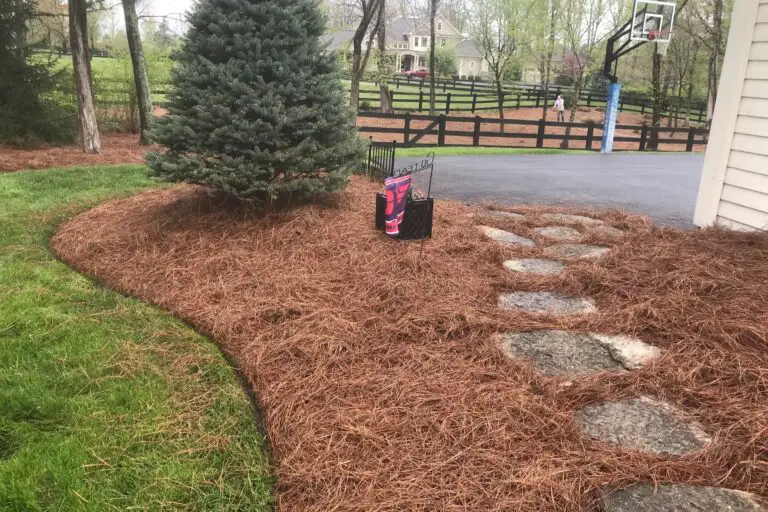Companion Planting for the Veggie Backyard
It’s now a widely known incontrovertible fact that sure vegetation develop higher when planted close to to one another as they enhance one another’s well-being and defend one another from assault by insect pests. Now that is the type of gardening I like, letting Nature cleared the path and do the work! That is particularly helpful when utilized to your vegetable backyard, guaranteeing that your susceptible vegetable seedlings are given the perfect begin by planting them together with their companion vegetation. Companion planting is one of the simplest ways of utilizing a small house for optimum manufacturing of wholesome vegetation and greens. Sure vegetation truly assist to enhance the soil construction and high quality and cut back pest assaults.
HELPFUL COMPANION TOMATOES
Tomatoes for instance, secrete an alkaloid substance which repels nematodes within the soil (eelworms) which trigger root knot and plant demise. Some vegetation are additionally heavy soil feeders, that means they take up and wish numerous the soil’s vitamins and minerals, whereas some vegetation are gentle feeders, and others even give meals again to the soil. So rising quite a lot of flowering vegetation amongst your veggies truly causes them to symbiotically help one another and assist all of them to thrive.
COMPANION PLANTING IS ‘POLYCULTURE’
Rising a number of crops collectively gives a symbiotic and biodiverse neighborhood of vegetation, known as ‘Polyculture’, whereas the standard farming apply of solely rising one crop is named ‘Monoculture’. Monoculture was designed by farmers to go well with mass rising and harvesting strategies, however this methodology invitations pests in for mass assault and depletes the soil. There’s a massive distinction between rising for revenue and rising for self-sufficiency and companion planting is unquestionably the perfect methodology for dwelling gardeners because it most intently emulates the pure stability of nature left to its personal units. So a tip could be to relatively plant your veggies and companion vegetation in free groupings relatively than rows, in order that the shade of taller vegetation helps susceptible seedlings and vegetation which are a magnet for sure pests, defend others from these pests. Vegetation naturally develop in crowded circumstances so emulate this too in your vegetable patch in what Jane Griffiths calls a ‘Jungle Type’ of companion planting. Jane is the writer of the e book, Janes Scrumptious Backyard, and is a vegetable gardening guru in South Africa, utilizing pure and natural rules of rising wholesome greens and vegetation.
Companion Planting Record
Here’s a listing from Soil For Lifetime of widespread greens and their related companion vegetation that assist them thrive, in addition to these vegetation that they like to not be near. Humorous how vegetation are so like folks!
| Vegetable | Likes | Dislikes |
| Asparagus | Tomato, Basil | |
| Bush Beans | Most greens however particularly Beetroot, Carrot, Celery, Mealies, Leeks, Potatoes, Strawberries, Radish, Cauliflower, Cucumber, Lettuce, Marigolds, Petunias | Onions, Garlic, Chives, Fennel |
| Climbing Beans | Mealies, Carrots | Sunflower, Onions and Cabbage household |
| Beetroot | Bush Beans, Onions, Kohlrabi, Lettuce, Cruciferous veg, Chives | Climbing beans |
| Cabbage household, Broccolli, Brussel Sprouts, Cauliflower, Kale, Kohlrabi | Beetroot, Celery, Lettuce, Onion, Potato, Tomato, Bush Beans, Chamomile, Dill, Thyme, Sage, Oregano, Marigolds, Rosemary | Climbing Beans, Strawberries, Garlic, Rue |
| Carrots | Bush Beans, Lettuce, Leeks, Onions, Peas, Radish, Tomato, Climbing Beans, Parsley, Dill, Sage | |
| Celery | Bush Beans, Cabbage household particularly Cauliflower, Leek Tomato | |
| Cucumber | Bush Beans, Cabbage household, Celery, Mealies, Lettuce, Radish, Sunflower, Nasturtiums | Potato |
| Eggplant (Brinjal) | Bush Beans, Peas, Potato, Nasturtiums | |
| Leeks | Beetroot, Bush Beans, Carrots, Celery, Onions | |
| Lettuce | Carrots, Radish, Onion, Spinach, Chervil, Strawberry | |
| Mealies | All Bean varieties, Beetroot, Cucurbits (Cucumber and Squash), Potatoes | |
| Onions | Beetroot, Cabbage household, Carrots, Lettuce, Leeks | Peas, Beans |
| Parsley | Basil, Chives, Asparagus, particularly in shade of Tomatoes | |
| Peas | Carrots, Radish, Spinach, Turnips | |
| Potato | Bush Beans, Cabbage household, Mealies, Peas, Marigolds | Sunflowers, Tomatoes, Rosemary, Cucumber, Pumpkin, Squash |
| Radish | Fast rising and pleased to be interplanted with most greens and beans | |
| Soya beans | With most greens and interplant with Mealies | |
| Squashes and Pumpkin household | Mealies, Radish | Potato |
| Strawberries | Bush Beans, Onions, Peas, Spinach, Lettuce, Marigolds, Borage | Cabbage household (Brassicas) |
| Sunflowers | Cucurbits, Sweetcorn | Climbing Beans, Potatoes |
| Tomatoes | Asparagus, Basil, Celery, Onion, Cabbage household | Apricot timber, Potatoes, Fennel, Strawberries |
| Turnips | Peas | |
| Zucchini (Child marrows) | Nasturtiums |
One other small instance of this technique I can reveal from my very own veggie backyard expertise. We now have wild Gooseberries that popped up amongst my lettuces and spinach that are extraordinarily liable to caterpillars. Now that my gooseberries are ripe, the red-wing starlings and olive thrush birds are regulars coming to have a Gooseberry or two. However they’re additionally retaining the caterpillars at bay and my Spinach vegetation are a lot happier because the gooseberries have been close by. I’m pleased to forfeit just a few gooseberries a day as they self-seed so readily giving me an excellent provide, and the safety they provide is a superb payoff!
Companion planting and pure gardening tips:
- In keeping with Jane, these companion planting ideas will assist to encourage wholesome, symbiotic advantages to your vegetation:
- Combine quick and slow-growing, early and late harvest crops in your beds.
- Combine heavy and light-weight feeding greens.
- Combine lengthy rooted vegetation with shallow rooted vegetation.
- Use sun-loving, tall or leafy vegetation as umbrella vegetation to shade these needing much less solar.
- Sow a number of varieties of every vegetable. This gives an assortment if you harvest, helps confuse pests and aids the soil.
- Harvest entire vegetation as quickly as they start to crowd others an excessive amount of. Don’t wait till they mature. Moderately add them to salads and stir-fries and have fewer, more healthy vegetation.
- Be ruthless with the vegetation you don’t need – pull them out when they’re younger.
- Sow fast-growing, shallow rooted vegetation like mustard, Asian Greens, radishes and buckwheat to crowd out weeds you don’t need.
- When planting purchased seedlings, don’t plant them suddenly. Moderately do succession planting to overlap harvesting time.
- Plant as a lot selection as doable.
- Frequently feed your soil with compost!
- Share seedlings with fellow gardeners. We regularly we now have too lots of the similar plant for our wants.
Pleased gardening!
Sources:
- Jane Griffiths, Jane’s Scrumptious Backyard.
- Pat Featherstone, Develop to Dwell, Soil for Life
The submit Companion Planting for the Veggie Backyard appeared first on Contours Landscapes.



